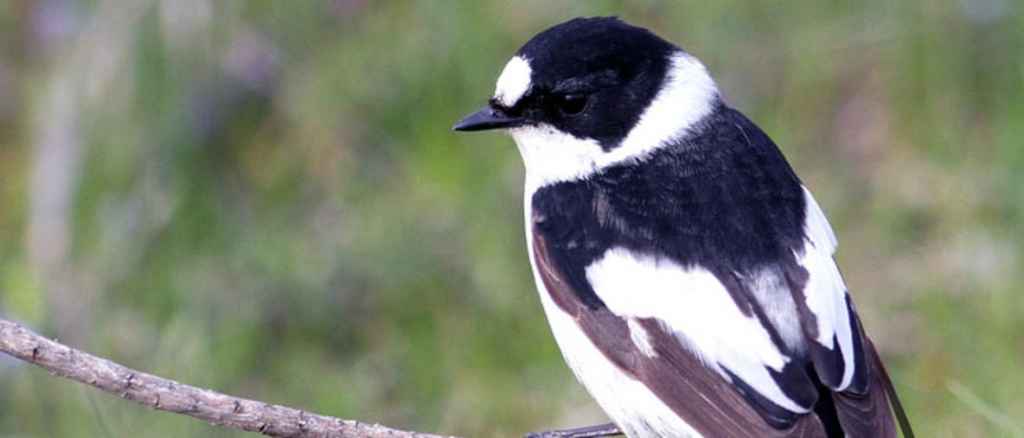The likelihood for mixed breeding between two songbird species lessens with warmer springs

Global climate warming is considered a major threat to many living organisms but not all consequences of warming need to be harmful to species. A recent study from the University of Helsinki published on Evolution shows that two bird species react differently to warmer spring temperatures, succeeding to mitigate negative effects of competition and mixed breeding.
Collared flycatchers are small passerine birds that are expanding their European breeding range towards the north in response to global climate warming. Approximately 50 years ago this species started to colonize Öland, an island in the Baltic Sea, and has since then expelled members of a closely related species – the pied flycatcher – from preferred habitats through competition over nest sites and hybridization i.e. mixed breeding between species. Hybridizing between the species is harmful as hybrid individuals do not produce offspring.
“By rushing to respond to climate change at different speed, the pressure to respond to each other lessens”, explains Päivi Sirkiä, researcher at the Finnish Museum of Natural History and co-author of the study at the University of Helsinki
Even minor differences in the response to environmental change of co-occurring closely related species can quickly affect the level of reproductive isolation and patterns of competitive exclusion between species. This indicates the complexity of understanding the ongoing effects of climate change on biodiversity.
The joint study by researchers at the Finnish Museum of Natural History and Uppsala University, shows that that there is some hope for pied flycatchers within the breeding range of collared flycatcher. The two species react differently to locally increasing spring temperatures: collared flycatchers need to advance their onset of breeding relatively more. This means that late breeding pied flycatchers experience a reduced risk of mixed breeding.
Adjustment of timing facilitates co-existence
Warmer spring temperatures advance the time of bud break, and therefore, the period that insects are most abundant. This affects many breeding bird species in the Northern Hemisphere that are reliant on caterpillars to feed their offspring. Both flycatcher species migrate all the way from Africa every year to eat and feed this nutritious caterpillar larvae while breeding. The birds need to time the onset of breeding to match the peak in food abundance. When the spring gets warmer the birds need to breed earlier to ensure that there are enough caterpillars to feed their quickly growing offspring.
Increased temporal segregation is beneficial because pied flycatchers reduce their risk of harmful mixed breeding with collared flycatchers.
“Time is one barrier that reduces interbreeding and facilitates co-existence”, says Sirkiä.
Why do these closely related and apparently ecologically similar birds respond differently to the changes in their shared local environment? A likely explanation is provided by some minor differences in resource use. Pied flycatchers have a broader niche use, including a slightly more variable diet than collared flycatchers. Pied flycatchers are thus less obliged to match their onset of breeding with the climate change-driven seasonal advancement of the peak of caterpillar larvae.
The build-up of reproductive isolation between species typically takes very long time but the recent contact zone on Öland means that causes and consequences of hybridization can be studied in real time.
The study was conducted by careful monitoring of more than 3200 breeding occasions of flycatchers, including determining how many nestlings were hatched to each breeding pair, and how many of these nestlings successfully fledged. This gave the researchers a good idea of the importance of earlier breeding for collared flycatchers, since when they bred earlier, they successfully fledged more nestlings.
For more information
Päivi Sirkiä tel.: +358505951782, email: paivi.sirkia@helsinki.fi
Original article
Päivi M. Sirkiä , S. Eryn McFarlane, William Jones, David Wheatcroft, Murielle Ålund, Jakub Rybinski, and Anna Qvarnström: Climate-driven build-up of temporal isolation within a recently formed avian hybrid zone. Evolution. DOI: 10.1111/evo.13404